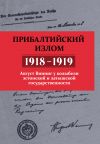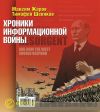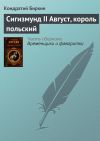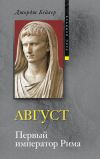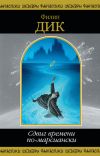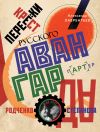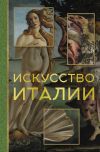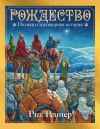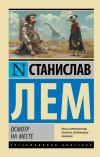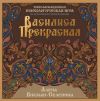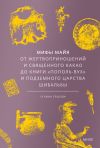Текст книги "Октавиан Август. Революционер, ставший императором"
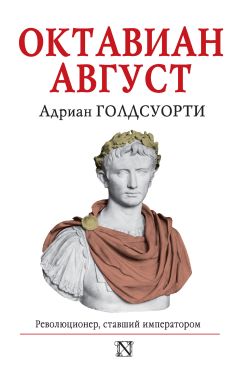
Автор книги: Адриан Голдсуорти
Жанр: Исторические приключения, Приключения
Возрастные ограничения: +16
сообщить о неприемлемом содержимом
Текущая страница: 41 (всего у книги 42 страниц)
ОКТАВИЯ (ок. 69–11 до н. э.). Старшая сестра Августа, она вышла замуж за Гая Клавдия Марцелла, а затем за Марка Антония, чтобы скрепить прочными узами его союз со своим братом. У нее был сын, Марцелл, от первого брака, и две дочери, Антония Старшая и Антония Младшая, от второго.
ПОМПЕЙ Великий (Гней Помпей Магн, 106–48 до н. э.). Самый знаменитый римский полководец своего времени, Помпей при Сулле занял выдающееся положение и с нарушением большинства установленных правил сделал потрясающую карьеру. В 50-е годы до н. э. ему поручили командование в испанских провинциях, но он остался снаружи у стен Рима, а на свое место отправил служить подчиненных ему легатов. Во время гражданской войны он сражался с Юлием Цезарем, в 48 г. до н. э. был разгромлен при Фарсале и вскоре после этого убит в Египте.
Секст ПОМПЕЙ (Секст Помпей Магн Пий, ок. 67–35 до н. э.). Младший сын Помпея Великого, Секст набрал войска против Юлия Цезаря как раз перед его вероломным убийством, но только в последующие годы стал представлять действительную силу. Захватив Сицилию для устройства там своей основной базы, он построил сильный флот, позволявший ему держать в блокаде Италию и спасать бежавших от проскрипций. Несмотря на ряд выигранных морских сражений, он в конце концов был разгромлен Августом и его сторонниками.
ПОСТУМ АГРИППА (12 до н. э. – 14 н. э.). Самый младший ребенок Агриппы и Юлии, Постум получил это имя потому, что родился после того, как умер его отец. До своего усыновления Августом в 4 г. н. э. он мало привлекал к себе внимание общества. Но даже после этого он не получил никакой должности, а спустя несколько лет от него отреклись и отправили в изгнание. Вскоре после смерти Августа его убили, но кто отдал этот приказ, неясно.
СКРИБОНИЯ (умерла через некоторое время после 16 н. э.). Жена Августа и мать Юлии. Скрибония сопровождала свою дочь в изгнание.
Тит СТАТИЛИЙ ТАВР (даты неизвестны, но в 37 и в 26 до н. э. был консулом). Один из самых преданных и надежных помощников Августа, Статилий Тавр, вероятно, уступал только Агриппе. В 16 г. до н. э. его назначили городским префектом, но, возможно, вскоре после этого он скончался, так как упоминания о нем исчезают из источников.
Луций Корнелий СУЛЛА Счастливый (138–78 до н. э.). Представитель древнего, но в последние годы ничем не отличившегося, патрицианского рода, Сулла был первым, кто повел в 88 г. до н. э. свои легионы на Рим и силой захватил власть. Позже он вел гражданскую войну против Мария и других врагов, назначив себя диктатором и введя проскрипционные списки, чтобы узаконить убийство противников.
ТИБЕРИЙ (42 до н. э. – 37 н. э.). Старший сын Ливии и ее первого мужа Тиберия Клавдия Нерона. Тиберию в очень молодом возрасте последовательно поручали важные должности и командные посты в провинциях. Женатый первоначально на дочери Агриппы, Випсании, он развелся с ней, чтобы жениться на Юлии, но брак этот оказался несчастливым для них обоих. В 6 г. до н. э. Тиберий добровольно уединился на Родосе и на десять лет оказался исключен из общественной жизни. Получив в конце концов разрешение вернуться в Италию, он был усыновлен Августом только после смерти Гая и Луция. В последующие годы ему предоставили полномочия, равные тем, которыми обладал принцепс, и Тиберий в 14 г. н. э. благополучно сделался его преемником.
ФУЛЬВИЯ (ум. 40 до н. э.). Жена Марка Антония и мать его двух сыновей-римлян, Антила и Юла; она, до того как выйти за него замуж, уже лишилась двух мужей, умерших насильственной смертью. Антоний, неохотно поддержав неудачное восстание Луция Антония, впоследствии развелся с ней, и этот развод, как говорили, ускорил ее кончину.
Марк Туллий ЦИЦЕРОН (ок. 106–43 до н. э.). Один из самых удачливых «новых людей» своего поколения, Цицерон стал выдающимся оратором в Риме. В качестве консула он в 63 г. до н. э. переиграл Катилину, но впоследствии подвергся нападкам за сомнительную законность своих действий. Во время гражданской войны Цицерон в конечном счете встал на сторону противников Юлия Цезаря, но позже был прощен. После вероломного убийства диктатора он поддерживал «Освободителей», а затем пытался использовать Августа для уничтожения Антония. После образования второго триумвирата стал одной из первых жертв проскрипций.
Луций Эмилий ЛЕПИД[757]757
В действительности триумвира Лепида звали Марком. – Прим. пер.
[Закрыть] (ок. 86–13/12 до н. э.). Сын консула, сделавшего попытку переворота в 78 г. до н. э., Лепид поддержал Юлия Цезаря во время гражданской войны, и в награду получал все более и более высокие должности, включая пост начальника конницы (magister equitum) в 44 г. до н. э. Это позволило ему командовать войсками, и таким образом он укрепил свое положение после вероломного убийства диктатора. Однако в последующие годы его солдаты утратили энтузиазм. Он присоединился к Марку Антонию и Августу при втором триумвирате, но с течением времени власть его слабела, и в 36 г. до н. э. его карьере был положен конец, и остаток своей жизни он фактически пребывал под арестом.
Гай ЮЛИЙ ЦЕЗАРЬ (100–44 до н. э.). Представитель аристократического, но на тот момент не пользовавшегося громкой славой рода. Начальная карьера Юлия Цезаря была совершенно обычной. Будучи в 59 г. до н. э. консулом, он присоединился к тайному союзу Помпея и Красса, известному сегодня как первый триумвират. После десяти лет военных успехов в Галлии он столкнулся с Помпеем в гражданской войне и стал диктатором. Был убит в результате заговора, составленного бывшими сторонниками и помилованными врагами.
ЮЛИЯ. Сестра Юлия Цезаря и бабушка Августа, она вышла замуж за Марка Атия Бальба и родила от него дочь Атию.
ЮЛИЯ, дочь Августа (39 до н. э. – 14 н. э.). Единственного ребенка Августа, выжившего при родах, Юлию использовали для поддержания преданности главных помощников Августа и последовательно выдавали замуж за Марцелла, Агриппу и Тиберия. От Агриппы у нее было пятеро детей, но только один мертворожденный от Тиберия. Раздражавший обоих брачный союз способствовал добровольному удалению Тиберия на Родос. Во 2 г. до н. э. отец осудил ее за прелюбодеяние и отправил в изгнание.
ЮЛИЯ, внучка Августа (ок. 19 до н. э. – 28 н. э.). Дочь Юлии и Агриппы, ее также обвинили в прелюбодеянии и в 8 г. н. э. отправили в изгнание.
Родословные
ПЕРВЫЙ ТРИУМВИРАТ

ВТОРОЙ ТРИУМВИРАТ И РОДСТВЕННЫЕ СВЯЗИ ПОТОМКОВ ЕГО УЧАСТНИКОВ

РОДСТВЕННИКИ АВГУСТА

a) СЕМЕЙСТВО АВГУСТА, ЛИВИИ И ОКТАВИИ ПОСЛЕ СМЕРТИ МАРКА АНТОНИЯ В 30 Г. ДО Н. Э

Бывшие в живых и члены императорской фамилии в указанное на схеме время обозначены прописными буквами; умершие и разведенные обозначены строчными буквами. Все даты до н. э.
СЕМЬИ И ДЕТИ АВГУСТА, ЛИВИИ И ОКТАВИИ В 19 Г. ДО Н. Э

* указывает на то, что Агриппа появляется дважды.
Бывшие в живых и члены императорской фамилии в указанное на схеме время обозначены прописными буквами; умершие и разведенные обозначены строчными буквами. Все даты до н. э.

СЕМЬЯ АВГУСТА, ЛИВИИ И ОКТАВИИ В 10 Г. ДО Н. Э

Бывшие в живых и члены императорской фамилии в указанное на схеме время обозначены прописными буквами; умершие и разведенные обозначены строчными буквами. Все даты до н. э.
ПОТОМКИ АВГУСТА К МОМЕНТУ ЕГО СМЕРТИ В 14 Г. Н. Э

Бывшие в живых и члены императорской фамилии в указанное на схеме время обозначены прописными буквами; умершие и разведенные обозначены строчными буквами.
УПРОЩЕННАЯ РОДОСЛОВНАЯ, ИЗОБРАЖАЮЩАЯ ПЕРЕХОД ИМПЕРАТОРСКОЙ ВЛАСТИ В ДИНАСТИИ ЮЛИЕВ – КЛАВДИЕВ

СЕМЕЙСТВО АГРИППЫ

* указывает на то, что Тиберий появляется дважды.
Пунктирная линия на приведенной диаграмме означает, что точно не известно, кто был матерью Випсании.
Библиография
В список включены все работы, упоминаемые в примечаниях. Следуя своей обычной практике, я постарался насколько возможно привлекать публикации сравнительно недавнего времени на английском языке, которые могут быть интересны любознательному читателю, если у него возникнет желание почитать по этой теме что-то еще. Идя по ссылкам в книге, можно расширить круг чтения и за счет важнейшей литературы на других языках.[758]758
Остается лишь сожалеть, что себя от чтения на других языках автор почти полностью освободил, в свойственной многим английским антиковедам традиции практически не используя иноязычную литературу и пренебрегая важнейшими исследованиями В. Гардтхаузена, К. Фицлера, О. Зеека, Ж. Каркопино, М. А. Леви, Н. А. Машкина (имеется его немецкий вариант), Д. Кинаста и многих других ученых. – Прим. пер.
[Закрыть]
Adcock, F., The Roman Art of War under the Republic (1940)
Alföldy, G., Noricum (1974)
Badian, E., Publicans and Sinners (1972)
Badian, E., ‘“Crisis Theories” and the beginning of the Principate’, in W. Wirth, Romanitas and Christianitas (1982), p. 18–41
Balsdon, J., ‘Fabula Clodiana’, Historia 15 (1966), p. 65–73
Barnes, T., ‘The victories of Augustus’, JRS 64 (1974), p. 21–26
Barrett, A., Caligula. The Corruption of Power (1989)
Barrett, A., Livia. First Lady of Imperial Rome (2002)
Barton, T., ‘Augustus and Capricorn: Astrological Polyvalency and Imperial Rhetoric’, JRS 85 (1995), p. 33–51
Billows, R., ‘The religious procession of the Ara Pacis Augustae: Augustus’ supplicatio in 13 bc’, JRA 6 (1993), p. 80–92
Billows, R., Julius Caesar. The Colossus of Rome (2009)
Bingen, J., Hellenistic Egypt: Monarchy, Society, Economy, Culture (2007)
Birch, R., ‘The Settlement of 26 June ad 4 and its Aftermath’, Classical Quarterly 31 (1981), p. 443–56
Boatright, M., ‘The Pomerial extension of Augustus’, Historia 35 (1986), p. 13–27
Bowersock, G., Augustus and the Greek World (1965)
Bowersock, G., ‘Augustus and the East: The problem of succession’, in Millar & Segal (1990), p. 169–88
Bradley, K., ‘Wet-Nursing at Rome. A Study in Social Relations’, in Rawson (1986), p. 201–229
Brandon, C., ‘Cement, concrete and settling barges at Sebastos: comparisons with other Roman harbour examples and the descriptions of Vitruvius’, in A. Raban & K. Houm (eds), Caesarea Maritima. A Retrospective after Two Millennia (1996), p. 25–40
Brunt, P., Italian Manpower 225 BC—AD 14 (1971)
Brunt, P., ‘The administrators of Roman Egypt’, JRS 65 (1975), p. 124–147
Brunt, P., ‘Princeps and equites’, JRS 73 (1983), p. 42–75
Brunt, P., ‘The role of the Senate in the Augustan regime’, Classical Quarterly 34. 2 (1984), p. 423–44
Camp, J., The Archaeology of Athens (2001)
Campbell, B., ‘The marriage of soldiers under the Empire’, JRS 68 (1978), p. 153–166
Campbell, B., ‘War and diplomacy: Rome and Parthia, 31 BC—AD 235’, in Rich & Shipley (1993), p. 213–240
Campbell, J., The Emperor and the Roman Army 31 BC—AD 235 (1984)
Carson, R., ‘Caesar and the Monarchy’, Greece & Rome 4 (1957), p. 46–53
Carter, J., The Battle of Actium: The Rise and Triumph of Augustus Caesar (1970)
Cartledge, P., ‘The Second Thoughts of Augustus on the res publica in 28/7 bc’, Greece and Rome 31 (1984), p. 30–40
Champlin, E., ‘Tiberius and the Heavenly Twins’, JRS 101 (2011), p. 73–99
Chilver, G., ‘Augustus and the Roman constitution 1939–1950’, Historia 1 (1950), p. 408–435
Christol, M., Une Histoire Provinciale. La Gaule narbonnaise av. J. – C. au IIIe siиcle ap. J. – C. (2010)
Clarke, J., ‘Augustan domestic interiors: propaganda or fashion?’ in Galinsky (2005), p. 264–278
Collins, J., ‘Caesar and the corruption of power’, Historia 4 (1957), p. 445–65
Conlin, D., The Artists of the Ara Pacis. Studies in the History of Greece and Rome (1997)
Connolly, P., Greece and Rome at War (1981)
Cooley, M. (ed.), The Age of Augustus. Lactor 17 (2003)
Corbett, J., ‘The Succession policy of Augustus’, Latomus 33 (1974), p. 87–97
Crawford, M., Roman Republican Coinage (1974)
Crook, J., ‘Some remarks on the Augustan Constitution’, Classical Review 3 (1953), p. 10–12
Cunliff e, B., Greeks, Romans and Barbarians: Spheres of Interaction (1988)
Curchin, L., The Romanization of Central Spain. Complexity, Diversity and Change in a Provincial Hinterland (2004)
Delia, D., ‘Fulvia Reconsidered’, in S. Pomperoy (ed.), Women’s History and Ancient History (1991), p. 197–217
Dennison, M., Empress of Rome. The Life of Livia (2010)
Derks, T., Gods, Temples and Ritual Practices: The Transformation of Religious Ideas and Values in Roman Gaul (1998)
Dixon, S., The Roman Mother (1988)
Dowling, M., Clemency and Cruelty in the Roman World (2006)
Drinkwater, J., Roman Gaul. The Three Provinces, 58 BC—AD 260 (1983)
Drinkwater, J., ‘The Principate – lifebelt, or millstone around the neck of Empire?’, in O. Hekster, G. Kleijn & D. Slootjes (eds), Crises and the Roman Empire (2007), p. 67–74
Durа́n Cabello, R. M., ‘Edificios de espectáculo’, in X. Raventуs (ed.), Les capitales provinciales de Hispania 2. Merida: Colonia Augustua Emerita (2004)
Dyson, S., ‘Native Revolt Patterns in the Roman Empire’, Aufstieg und Niedergang der römischen Welt 2. 3 (1975), p. 38–175
Dyson, S., The Creation of the Roman Frontier (1985)
Dyson, S., Rome. A Living Portrait of an Ancient City (2010)
Eck, W., ‘Senatorial Self-Representation: Developments in the Augustan Period’, in Millar & Segal (eds) (1990), p. 129–167
Eck, W., The Age of Augustus (2003)
Edmondson, J. (ed.), Augustus (2009)
Ehrenberg, V. & Jones, A., Documents Illustrating the Reigns of Augustus and Tiberius (2nd edn, 1975)
Everitt, A., Cicero. A Turbulent Life (2001)
Everitt, A., Augustus: The Life of Rome’s First Emperor (2006)
Fantham, E., Julia Augusti, the Emperor’s Daughter (2006)
Ferrary, J., ‘The powers of Augustus’, in Edmondson (2009), p. 90–136
Ferrill, A., ‘Prosopography and the Last Years of Augustus’, Historia 20 (1971), p. 718–731
Ferrill, A., ‘Augustus and his daughter: a modern myth’, in C. Deroux (ed.), Studies in Latin Literature and Roman History 2 (1980), p. 332–346
Feugère, M. (ed.), L’Équipment Militaire et L’Armement de la République, Journal of Roman Military Equipment Studies 8 (1997)
Finley, M. I. (ed.), Studies in Roman Property (1976)
Fishwick, D., The Imperial Cult in the Latin West: Studies in the Ruler Cult of the Western Roman Empire. Vol. 3 (2002)
Flory, M., ‘Abducta Neroni Uxor: The Historiographic Tradition on the Marriage of Octavian and Livia’, Transactions of the American Philological Association 118 (1988), p. 343–59
Flower, H., ‘The tradition of the spolia opima: M. Claudius Marcellus and Augustus’, Classical Antiquity 19 (2000), p. 34–64
Franzen, P., ‘The Augustan Legionary Fortress at Nijmegen. Legionary and auxiliary soldiers’, in A. Morillo, N. Hanel & E. Martín, Limes XX: Estudios sobre la frontera romana. Roman Frontier Studies. Anejos de Gladius 13. Vol. 1 (2009), p. 1257–1269
Gabba, E., ‘The Perusine War and Triumviral Italy’, Harvard Studies in Classical Philology 75 (1971), p. 139–160
Gabba, E. (trans. P. Cuff), The Roman Republic, the Army and the Allies (1976)
Galinsky, K., Augustan Culture (1996)
Galinsky, K. (ed.), The Cambridge Companion to the Age of Augustus (2005)
Galinsky, K., Augustus. Introduction to the Life of an Emperor (2012)
Gardner, J., ‘The Dictator’, in Griffin (2009), p. 57–71
Garnsey, P., Famine and Food Supply in the Graeco-Roman World. Responses to Risk and Crisis (1988)
Gelzer, M. (trans. P. Needham), Caesar. Politician and Statesman (1968)
Goldsworthy, A., The Roman Army at War 100 BC—AD 200 (1996)
Goldsworthy, A., ‘ ‘‘Instinctive genius”: the depiction of Caesar the general’, in Welch & Powell (1998), p. 193–219
Goldsworthy, A., In the Name of Rome (2004)
Goldsworthy, A., The Complete Roman Army (2004)
Goldsworthy, A., Caesar: The Life of a Colossus (2006)
Goldsworthy, A., Antony and Cleopatra (2010)
Goudineau, C., Cesar et la Gaule (1995)
Gowers, E., ‘Augustus and “Syracuse”’, JRS 100 (2010), p. 69–87
Grant, M., Cleopatra (1972)
Green, P., Alexander to Actium: The Historical Evolution of the Hellenistic Age (1990)
Greenhalgh, P., Pompey: The Roman Alexander (1980)
Griffin, J., ‘Augustus and the poets: “Caesar qui cogere posset”’, in Millar & Segal (1990), p. 189–218
Griffin, M., ‘The Elder Seneca and Spain’, JRS 62 (1972), p. 1–19
Griffin, M. (ed.), A Companion to Julius Caesar (2009)
Grimal, P. (trans. A. Train), Love in Ancient Rome (1986)
Gruen, E., The Last Generation of the Roman Republic (1974)
Gruen, E., ‘Cleopatra in Rome. Fact and Fantasies’, in D. Braund & C. Gill (eds), Myths, History and Culture in Republican Rome: Studies in Honour of T. P. Wiseman (2003), p. 257–274
Gruen, E., ‘Caesar as a politician’, in Griffin (2009), p. 23–36
Gwynn, A., Roman Education (1926)
Hallett, J., ‘Perusinae Glandes and the Changing Image of Augustus’, American Journal of Ancient History 2 (1977), p. 151–171
Harmand, J., L’armée et le soldat а Rome de 107 à 50 avant nôtre ère (Paris, 1967)
Harrington, D., ‘The Battle of Actium – a Study in Historiography’, Ancient World 9. 1–2 (1984), p. 59–64
Hölbl, G. (trans. T. Saavedra), A History of the Ptolemaic Empire (2001)
Holder, P., The Auxilia from Augustus to Trajan (1980)
Holland, R., Augustus. Godfather of Europe (2004)
Huzar, E., ‘Mark Antony: Marriages vs. careers’, The Classical Journal 81 (1985/6), p. 97–111
James, S., Rome and the Sword. How Warriors and Weapons Shaped Roman History (2011)
Johnson, J., ‘The Authenticity and Validity of Antony’s will’, L’ Antiquité Classique 47 (1978), p. 494–503
Jones, A., ‘The Imperium of Augustus’, JRS 41 (1951), p. 112–19
Jones, A., ‘The elections under Augustus’, JRS 45 (1955), p. 9–21
Jones, R., ‘The Roman Military Occupation of North-West Spain’, JRS 66 (1976), p. 45–66
Kennedy, D. (ed.), The Roman Army in the East. Journal of Roman Archaeology Supplements 18 (1996)
Kennedy, D., ‘Parthia and Rome: eastern perspectives’, in Kennedy
(1996), p. 67–90
Keppie, L., Colonisation and Veteran Settlement in Italy: 47–14 BC (1983)
Keppie, L., The Making of the Roman Army (1984)
Keppie, L., ‘A centurion of legio Martia at Padova?’, Journal of Roman Military Equipment Studies 2 (1991), p. 115–21 = L. Keppie, Legions and Veterans: Roman Army Papers 1971–2000 (2000), p. 68–74
King, D., The Elgin Marbles (2006)
Kos, M., Appian and Illyricum (2005)
Lacey, W., ‘Summi Fastigii Vocabulum: The story of a title’, JRS 69 (1979), p. 28–34
Lacey, W., Augustus and the Principate. The Evolution of the System (1996)
Lange, C., Res Publica Constituta. Actium, Apollo and the Accomplishment of the Triumviral Assignment (2009)
Lange, C., ‘The Battle of Actium: A Reconsideration’, Classical Quarterly 61. 2 (2011), p. 608–623
Last, H., ‘Imperium Maius: A note’, JRS 37 (1947), p. 157–164
Le Bohec, Y., The Imperial Roman Army (1994)
Leon, E., ‘Scribonia and her daughters’, Transactions and Proceedings of the American Philological Association 82 (1951), p. 168–275
Levick, B., ‘Abdication and Agrippa Postumus’, Historia 21 (1972), p. 674–697
Levick, B., ‘Julians and Claudians’, Greece and Rome 22 (1975), p. 29–38
Levick, B., Tiberius the Politician (1999)
Levick, B., Augustus. Image and Substance (2010)
Lewis, N. Reinhold, M. (eds), Roman Civilization. Selected Readings Vol. 1: The Republic and the Augustan Age (3rd edn, 1990)
Liebeschuetz, J., ‘The settlement of 27 bc’, in C. Deroux, Studies in Latin Literature and Roman History (2008), p. 345–365
Linderski, J., ‘Aphrodisias and the Res Gestae: The Genera Militiae and the Status of Octavian’, JRS 74 (1984), p. 74–80
Lintott, A., ‘Electoral bribery in the Roman Republic’, JRS 80 (1990), p. 1–16
Lintott, A., The Constitution of the Roman Republic (1999)
Lintott, A., Cicero as Evidence (2008)
Lintott, A., ‘The assassination’, in Griffin (2009), p. 72–82
Lo Cascio, E., ‘The Size of the Roman Population: Beloch and the Meaning of the Augustan Census Figures’, JRS 84 (1994), p. 23–40
Lowe, B., Roman Iberia. Economy, Society and Culture (2009)
Luce, T., ‘Livy, Augustus, and the Forum Augustum’, in Edmondson (2009), p. 399–415
MacMullen, R., Enemies of the Roman Order. Treason, Unrest and Alienation in the Empire (1967)
MacMullen, R., Romanization in the Time of Augustus (2000)
McNally, M., Teutoburg Forest AD 9. The Destruction of Varus and His Legions. Osprey Campaign Series 228 (2011)
Magie, D., ‘Augustus’ War in Spain (26–25 bc)’, Classical Philology 15 (1920), p. 323–339
Manley, J., AD 43 The Roman Invasion of Britain – A Reassessment (2002)
Marrou, H., A History of Education in Antiquity (1956)
Matyszak, P., Mithridates the Great. Rome’s Indomitable Enemy (2004)
Maxfield, V., The Military Decorations of the Roman Army (1981)
Mayor, A., The Poison King (2010)
Meier, C. (trans. D. McLintock), Caesar (1996)
Mellor, R., Tacitus (1993)
Mierse, W., Temples and Towns in Roman Iberia. The Social Dynamics of Sanctuary Designs from the Third Century BC to the Third Century AD (1999)
Millar, F., A Study of Cassius Dio (1964)
Millar, F., ‘Triumvirate and Principate’, JRS 63 (1973), p. 50–67
Millar, F., The Emperor in the Roman World (1977)
Millar, F., ‘Empire and City, Augustus to Julian: Obligations, excuses and status’, JRS 73 (1983), p. 76–96
Millar, F. & Segal, E. (eds), Caesar Augustus. Seven Aspects (corrected paperback edn, 1990)
Millar, F., ‘State and Subject: the impact of monarchy’, in Millar &
Segal (1990), p. 37–60
Millar, F., The Roman Near East 31 BC—AD 337 (1993)
Millar, F., The Crowd in the Late Roman Republic (1998)
Mitchell, T., Cicero: The Ascending Years (1979)
Mitchell, T., Cicero the Senior Statesman (1991)
Morillo Cerdа́n, A., ‘The Augustean Spanish Experience: The origin of the limes system?’, in A. Morillo, N. Hanel & E. Martin, Limes XX: Estudios sobre la frontera romana. Roman Frontier Studies. Anejos de Gladius 13. Vol. 1 (2009), p. 239–251
Morrison, J. & Coates, J., Greek and Roman Oared Warships (1996)
Mouritsen, H., Plebs and Politics in the Late Roman Republic (2001)
Murdoch, A., Rome’s Greatest Defeat. Massacre in the Teutoburg Forest (2006)
Nicolet, C., ‘Augustus, Government, and the Propertied Classes’, in Millar & Segal (1990), p. 89–128
North, J., ‘Caesar at the Lupercalia’, JRS 98 (2008), p. 144–160
Oorthuys, J. (ed.), The Varian Disaster: The Battle of the Teutoburg Forest. Ancient Warfare Special Issue (2009)
Osgood, J., Caesar’s Legacy. Civil War and the Emergence of the Roman Empire (2006)
Paget, R., ‘The ancient ports of Cumae’, JRS 58 (1968), p. 152–169
Paget, R., ‘The Naval Battle of Cumae in 38 bc’, Latomus 29 (1970), p. 363–369
Parker, H., The Roman Legions (1957)
Patterson, J., ‘The City of Rome Revisited: From Mid-Republic to Mid-Empire’, JRS 100 (2010), p. 210–232
Pelling, C., Plutarch: Life of Antony (1988)
Pelling, C., Plutarch and History (2002)
Pitassi, M., The Navies of Rome (2009)
Platner, S. & Ashby, T., A Topographical Dictionary of Ancient Rome (1929)
Pollini, J., ‘Appuleii and Some Others on the Ara Pacis’, American Journal of Archaeology 90 (1986), p. 453–460
Potter, D., ‘Emperors, their borders and their neighbours: the scope of imperial mandata’, in Kennedy (1996), p. 49–66
Powell, A., ‘ ‘‘An island amid the fl ame”: The Strategy and Imagery of Sextus Pompeius, 43–36 bc’, in Powell & Welch (2002), p. 103–133
Powell, A. & Welch, K. (eds), Sextus Pompeius (2002)
Powell, A., Virgil the Partisan: A Study in the Re-integration of Classics (2008)
Powell, L., Eager for Glory. The Untold Story of Drusus the Elder, Conqueror of Germany (2011)
Price, S., Rituals and Power. The Roman Imperial Cult in Asia Minor (1985)
Purcell, N., ‘Livia and the Womanhood of Rome’, Proceedings of the Cambridge Philological Society (1986), p. 78–105 = Edmondson (2009), p. 165–194
Queseda Sanz, F., ‘Gladius hispaniensis: an Archaeological View from Iberia’, Journal of Roman Military Equipment Studies 8 (1997), p. 251–270
Queseda Sanz, F., Armas de la Antigua Iberia de Tartessos a Numancia (2010)
Raaflaub, K. & Toher, M. (eds), Between Republic and Empire. Interpretations of Augustus and his Principate (1990)
Raafl aub, K., ‘The political significance of Augustus’ military reforms’, in Edmondson (2009), p. 203–228
Ramsay, J., ‘The Senate, Mark Antony, and Caesar’s Legislative Legacy’, Classical Quarterly 44 (1994), p. 130–145
Ramsay, J. & Licht, A., The Comet of 44 BC and Caesar’s Funeral Games (1997)
Ramsay, J., ‘Did Mark Antony Contemplate an Alliance with His Political Enemies in July 44 B.C.E.?’, Classical Philology 96. 3 (2001), p. 253–268
Ramsay, J., ‘Mark Antony’s Judiciary Reform and its revival under the Triumvirs’, JRS 95 (2005), p. 20–37
Ramsay, J., ‘The Proconsular Years: Politics at a Distance’, in Griffin (2009), p. 37–56
Rawson, B. (ed.), The Family in Ancient Rome (1986)
Rawson, B. (ed.), Marriage, Divorce and Children in Ancient Rome (1991)
Rawson, B., Children and Childhood in Roman Italy (2003)
Rawson, E., ‘Caesar’s Heritage: Hellenistic Kings and their Roman Equals’, JRS 65 (1975), p. 148–59
Rawson, E., ‘The Ciceronian Aristocracy and its properties’, in Finley (ed.) (1976), p. 85–102
Rawson, E., Intellectual Life in the Roman Republic (1985)
Rea, J., ‘Lease of a Red Cow called Thayris’, The Journal of Egyptian Archaeology 68 (1982), p. 277–282
Reinhold, M., Marcus Agrippa: A Biography (1933)
Reynolds, J., Aphrodisias and Rome (1982)
Ribera i Lacomba, A. & Calvo Galvez, M., ‘La primera evidencia arqueolуgica de la destrucciуn de Valentia por Pompeyo’, Journal of Roman Archaeology 8 (1995), p. 19–40
Rice, E., Cleopatra (1999)
Rice Holmes, T., The Roman Republic. Vols 1–3 (1923–8)
Rice Holmes, T., The Architect of the Roman Empire. Vol. 1 (1928)
Rich, J., Declaring War in the Roman Republic in the Period of Transmarine Expansion (1976)
Rich, J. & Shipley, G. (eds), War and Society in the Roman World (1993)
Rich, J., ‘Augustus and the spolia opima’, Chiron 26 (1996), p. 85–127
Rich, J., ‘The Parthian honours’, Papers of the British School at Rome 66 (1998), p. 71–128
Rich, J., ‘Augustus, War and Peace’, in Edmondson (2009), p. 137–164 = L. de Blois, P. Erdkamp, O. Hekster, G. de Kleijn S. Mols (eds), The Representation and Perception of Roman Imperial Power: Proceedings of the Third Workshop of the International Network, Impact of Empire (Roman Empire c.200 BC—AD 476). Netherlands Institute in Rome, 20–23 March 2002 (2003), p. 329–357
Rich, J., ‘Cantabrian closure: Augustus’ Spanish War and the ending of his memoirs’, in Smith & Powell (2009), p. 145–172
Richardson, J., ‘The triumph, the praetors and the Senate in the early second century BC’, JRS 65 (1976), p. 50–63
Richardson, J., ‘Imperium Romanum: Empire and the Language of Power’, JRS 81 (1991), p. 1–9
Richardson, J., The Romans in Spain (1996)
Richardson, J., Augustan Rome 44 BC TO AD 14. The Restoration of the Republic and the Establishment of Empire (2012)
Richardson, P., Herod. King of the Jews and Friend of the Romans (1996)
Rickman, G., The Corn Supply of Ancient Rome (1980)
Rihll, T., ‘Lead Slingshot (glandes)’, JRA 22 (2009), p. 149–69
Roddaz, J. M., Marcus Agrippa (1984)
Rogers, W., Greek and Roman Naval Warfare (1937)
Roller, D., The Building Programme of Herod the Great (1998)
Rose, C., ‘Princes and barbarians on the Ara Pacis’, American Journal of Archaeology 94 (1990), p. 453–467
Rosenstein, N., Imperatores Victi (1993)
Rost, A., ‘The Battle between Romans and Germans in Kalkriese: Interpreting the Archaeological Remains from an ancient battlefield’, in A. Morillo, N. Hanel & E. Martin, Limes XX: Estudios sobre la frontera romana. Roman Frontier Studies. Anejos de Gladius 13. Vol. 3 (2009), p. 1339–145
Roth, J., The Logistics of the Roman Army at War (264 BC—AD 235) (1999)
Roymans, N., Tribal Societies in Northern Gaul: An Anthropological Perspective. Cingula 12 (1990)
Saddington, D., The Development of the Roman Auxiliary Forces from Caesar to Vespasian (49 BC—AD 79) (1982)
Saller, R., ‘Anecdotes as historical evidence’, Greece and Rome 27 (1980), p. 69–83
Salmon, E., ‘The Evolution of Augustus’ Principate’, Historia 5 (1956), p. 456–478
Salway, B., ‘What’s in a Name? A Survey of Roman Onomastic Practice from 700 BC—AD 700’, JRS 84 (1994), p. 124–145
Scheid, J., ‘To honour the Princeps and venerate the gods. Public cult, neighbourhood cults, and imperial cult in Augustan Rome’, in Edmondson (2009), p. 275–299
Scheidel, W., ‘Emperors, Aristocrats, and the Grim Reaper: Towards a Demographic Profile of the Roman Elite’, Classical Quarterly 49 (1999), p. 254–281
Schlüter, W., ‘The Battle of the Teutoburg Forest: Archaeological Research at Kalkriese near Osnabrück’, in J. Creighton & R. Wilson, Roman Germany. Studies in Cultural Interaction. Journal of Roman Archaeology Supplementary Series 32 (1999), p. 125–159
Schürer, E., Vermes, G. & Millar, F., The History of the Jewish People in the Age of Jesus Christ. Vol. 1 (1973)
Scott, K., ‘The Political Propaganda of 44–30 bc’, Memoirs of the American Academy in Rome 11 (1933), p. 7–49
Seager, R., Pompey the Great. A Political Biography (2nd edn, 2002)
Seager, R., Tiberius (2005)
Shatzman, I., Senatorial Wealth and Roman Politics. Collection Latomus. Vol. 142 (1975)
Sheppard, S., Philippi 42 BC. The Death of the Roman Republic. Osprey Campaign Series 199 (2008)
Sheppard, S., Actium: Downfall of Antony and Cleopatra. Osprey Campaign Series 211 (2009)
Sherk, R., Roman Documents from the Greek East (1969)
Sherwin-White, A., Roman Foreign Policy in the East, 168 BC—AD 1 (1984)
Siani-Davies, M., ‘Ptolemy XII Auletes and the Romans’, Historia 46 (1997), p. 306–340
Sidebotham, S., ‘Aelius Gallus and Arabia’, Latomus 45 (1986), p. 590–602
Simpson, C., ‘The date of the dedication of the Temple of Mars Ultor’, JRS 67 (1977), p. 91–94
Slater, W., ‘Pueri, Turba Minuta’, in Bulletin of the Institute of Classical Studies 21 (1974), p. 133–140
Smith, C. & Powell, A. (eds), The Lost Memoirs of Augustus and the Development of Roman Autobiography (2009)
Smith, R., Service in the Post-Marian Roman Army (1958)
Spaul, J., ALA2 (1994)
Spawforth, A., Greece and the Augustan Cultural Revolution. Greek Culture in the Roman World (2012)
Speidel, M., ‘The Roman army in Judaea under the Procurators’, in M. Speidel, Roman Army Studies. Vol. 2, Mavors (1992), p. 224–232
Stavely, E., ‘The “Fasces” and “Imperium Maius”’, Historia 12 (1963), p. 458–84
Stevenson, T., ‘The Ideal Benefactor and the Father Analogy in Greek and Roman Thought’, Classical Quarterly 42 (1992), p. 421–436
Stockton, D., ‘Primus and Murena’, Historia 14 (1965), p. 18–40
Stockton, D., Cicero. A Political Biography (1971)
Swan, M., ‘The Consular fasti of 23 bc and the Conspiracy of Varro Murena’, Harvard Studies in Classical Philology 71 (1967), p. 235–247
Syme, R., ‘Notes on the legions under Augustus’, JRS 23 (1933), p. 14–33
Syme, R., ‘The Spanish War of Augustus’, American Journal of Philology 55 (1934), p. 293–317
Syme, R., ‘The Allegiance of Labienus’, JRS 28 (1938), p. 113–125
Syme, R., Tacitus (2 vols, 1958)
Правообладателям!
Это произведение, предположительно, находится в статусе 'public domain'. Если это не так и размещение материала нарушает чьи-либо права, то сообщите нам об этом.



